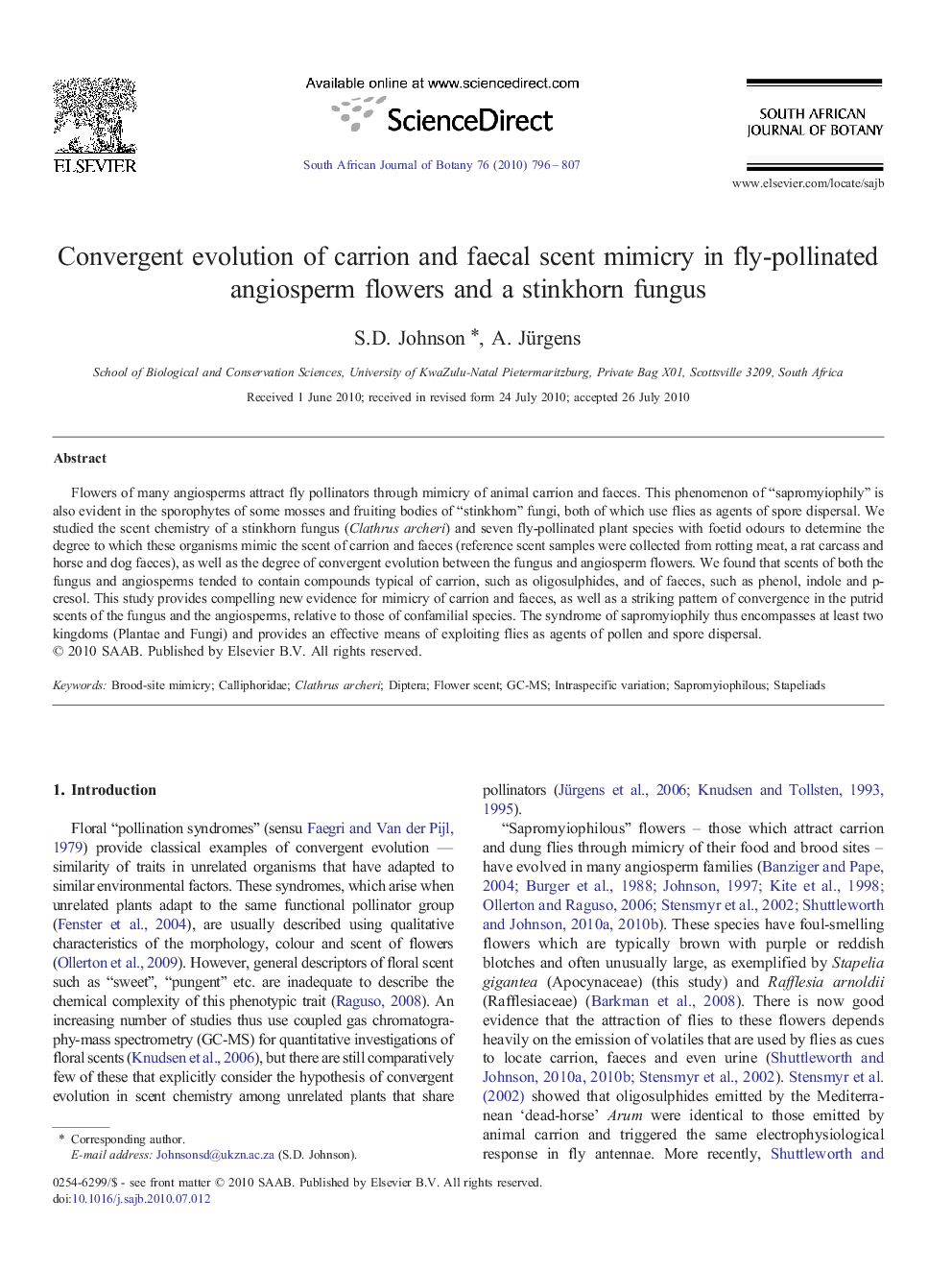| Article ID | Journal | Published Year | Pages | File Type |
|---|---|---|---|---|
| 4521189 | South African Journal of Botany | 2010 | 12 Pages |
Flowers of many angiosperms attract fly pollinators through mimicry of animal carrion and faeces. This phenomenon of “sapromyiophily” is also evident in the sporophytes of some mosses and fruiting bodies of “stinkhorn” fungi, both of which use flies as agents of spore dispersal. We studied the scent chemistry of a stinkhorn fungus (Clathrus archeri) and seven fly-pollinated plant species with foetid odours to determine the degree to which these organisms mimic the scent of carrion and faeces (reference scent samples were collected from rotting meat, a rat carcass and horse and dog faeces), as well as the degree of convergent evolution between the fungus and angiosperm flowers. We found that scents of both the fungus and angiosperms tended to contain compounds typical of carrion, such as oligosulphides, and of faeces, such as phenol, indole and p-cresol. This study provides compelling new evidence for mimicry of carrion and faeces, as well as a striking pattern of convergence in the putrid scents of the fungus and the angiosperms, relative to those of confamilial species. The syndrome of sapromyiophily thus encompasses at least two kingdoms (Plantae and Fungi) and provides an effective means of exploiting flies as agents of pollen and spore dispersal.
Research highlights►Scent chemistry of sapromyiophilous plants and fungi shows evolutionary convergence.► Scent of sapromyiophilous plants and fungi contains sulphides, indole and p-cresol.► Sapromyiophilous plants and fungi mimic the scent of animal carrion and faeces.
